

She started off as one giant log of kauri, the superlative boat-building timber that made New Zealand famous and the British navy invincible.
That was in 1949. In her lifetime – now 73 years – Vega has been at the middle of many high seas and human dramas. She’s been an actor on the world’s political and environmental stages.
But the story of Vega goes back way further than that. In 1890, Colin Archer, the son of Scottish immigrants in Norway, built a 40ft pilot boat named Teddy. She was a gaff-rigged cutter, and forged a reputation for seaworthiness and speed.
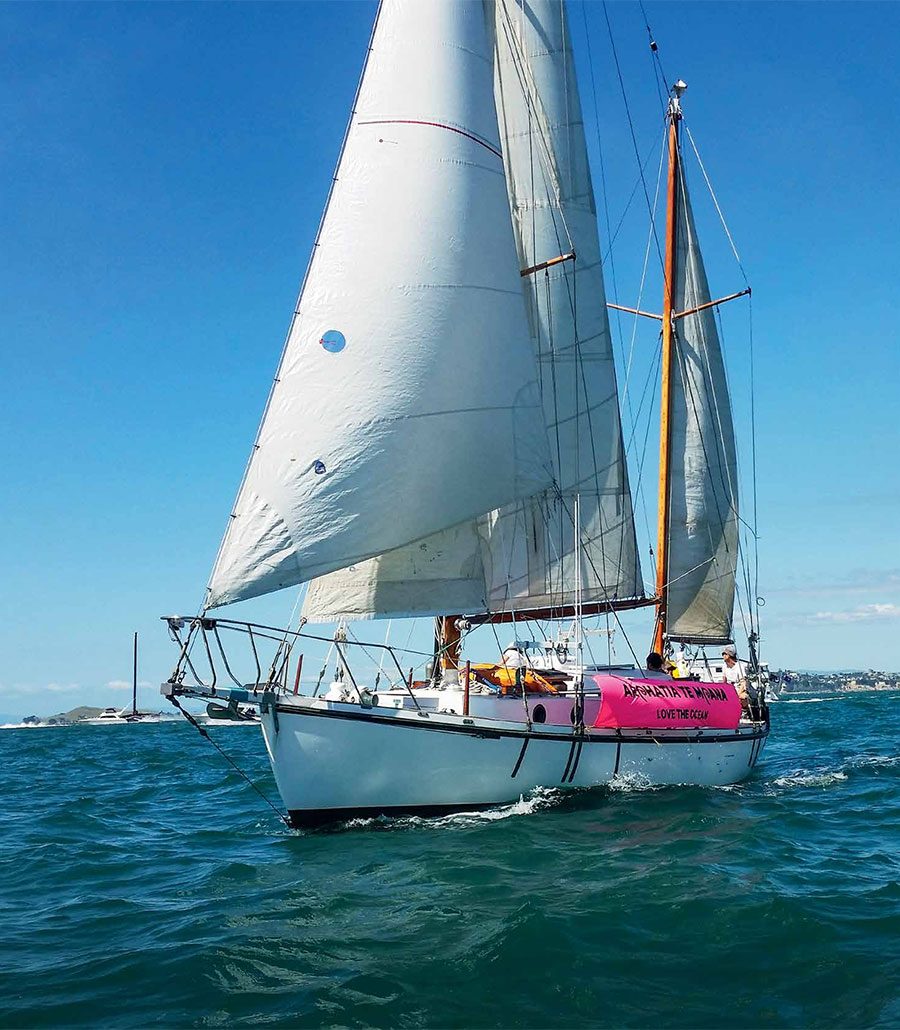
Teddy was decommissioned in 1928, bought by Norwegian writer Erling Tambs and his wife Julie. They fitted her out as a simple cruising yacht – no engine, no charts. They sailed to France – surviving a North Sea storm – cruised to Portugal, the West Indies, finally reaching New Zealand via Panama in 1931.
Teddy entered the first Trans-Tasman yacht race. She won on handicap. Tambs sailed her back to Auckland, picked up Julie and the kids Tony and Tui, and did a trip to Tonga. Back in Auckland, they set off for Australia again, but – still without an engine – were shipwrecked on Kawau island in the Hauraki Gulf. Though heart-broken, Tambs bought another Archer yacht, named Sandefiord.
But Teddy had so impressed Auckland boatbuilders Nobby Collins and Ernie Bailey, they took the lines from her wreck.
A young Alan Orams bought the plans from Collins, and built the Althirza on the beach at One Tree Point, near Whangarei, starting in 1946. All with hand tools. And all of the timber used was native New Zealand: kauri for the planking, kowhai and tanekaha ribs, totara cabin sides, matai decking and cabin top, and matai plywood for the bulkheads. Orams’ tight budget necessitated concrete for ballast. “She was my dream yacht. I built her to take me around the world.”
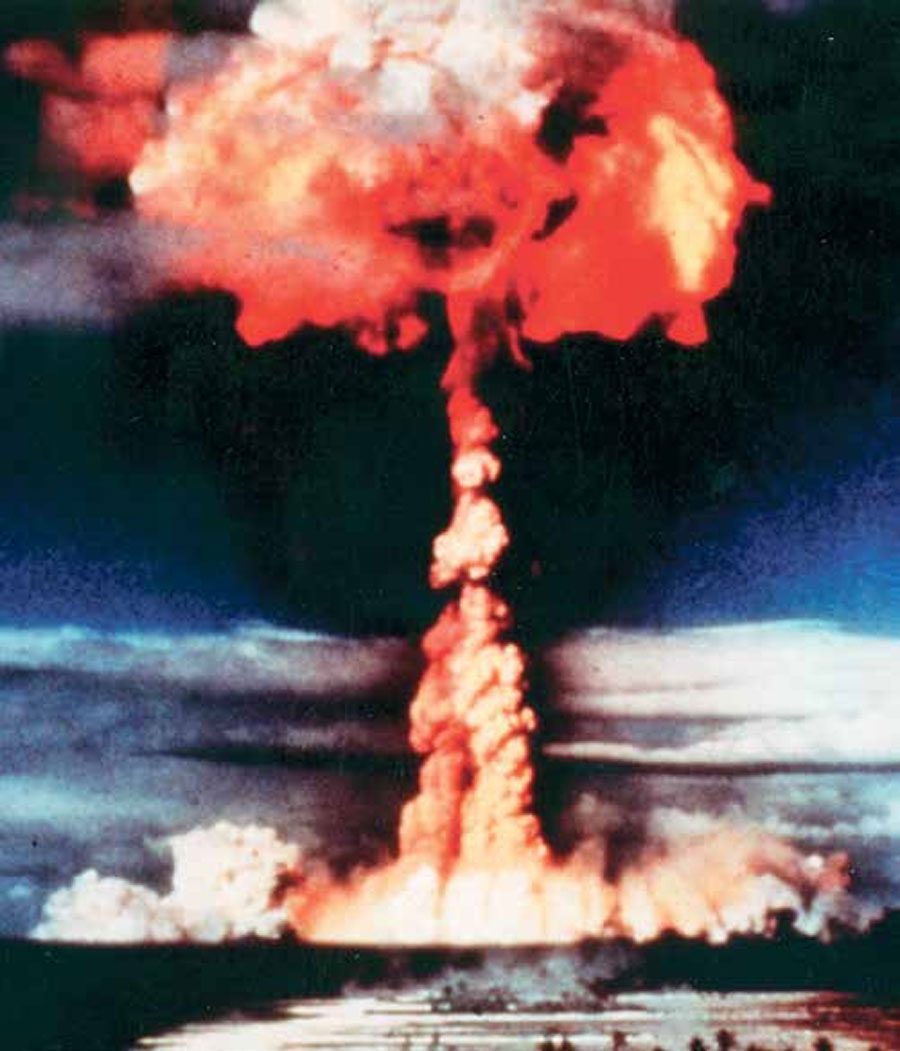
Althirza was launched on 18 December 1949, and promptly re-named Vega. At first with no engine, later a 20hp Morris Vedette petrol auxiliary was fitted. But Alan’s world cruise never happened. He founded Orams’ Boatyard, and increasingly busy, sold Vega in 1954.
A succession of owners followed, some neglectful, in Auckland, Wellington and Picton at the top of the South Island. Then a Canadian property developer named David McTaggart bought Vega and had her refitted at Orams’ Yard in Auckland in preparation for a Pacific voyage. In 1972, McTaggart read about the French Government’s plan to test nuclear bombs above Mururoa Atoll in the Tuamotu Archipelago. His 19-year-old partner Ann-Marie Horne convinced him to sail Vega to Mururoa as a protest. A small nuclear-disarmament outfit in Vancouver, called Greenpeace, offered to fund the trip.
Vega, McTaggart and his crew of Grant Davidson and Nigel Ingram spent five weeks hove-to just outside the French territorial limit off Mururoa. The French Navy was unimpressed. Under orders from Admiral Christian Claverie, the minesweeper La Paimpolaise rammed Vega, which was still in international waters. They then towed the stricken yacht to Mururoa, repaired her, and within 48 hours, ordered the crew back out to sea. Vega limped home to Auckland and McTaggart and Horne retreated to a cabin in the Canadian woods on Vancouver island.
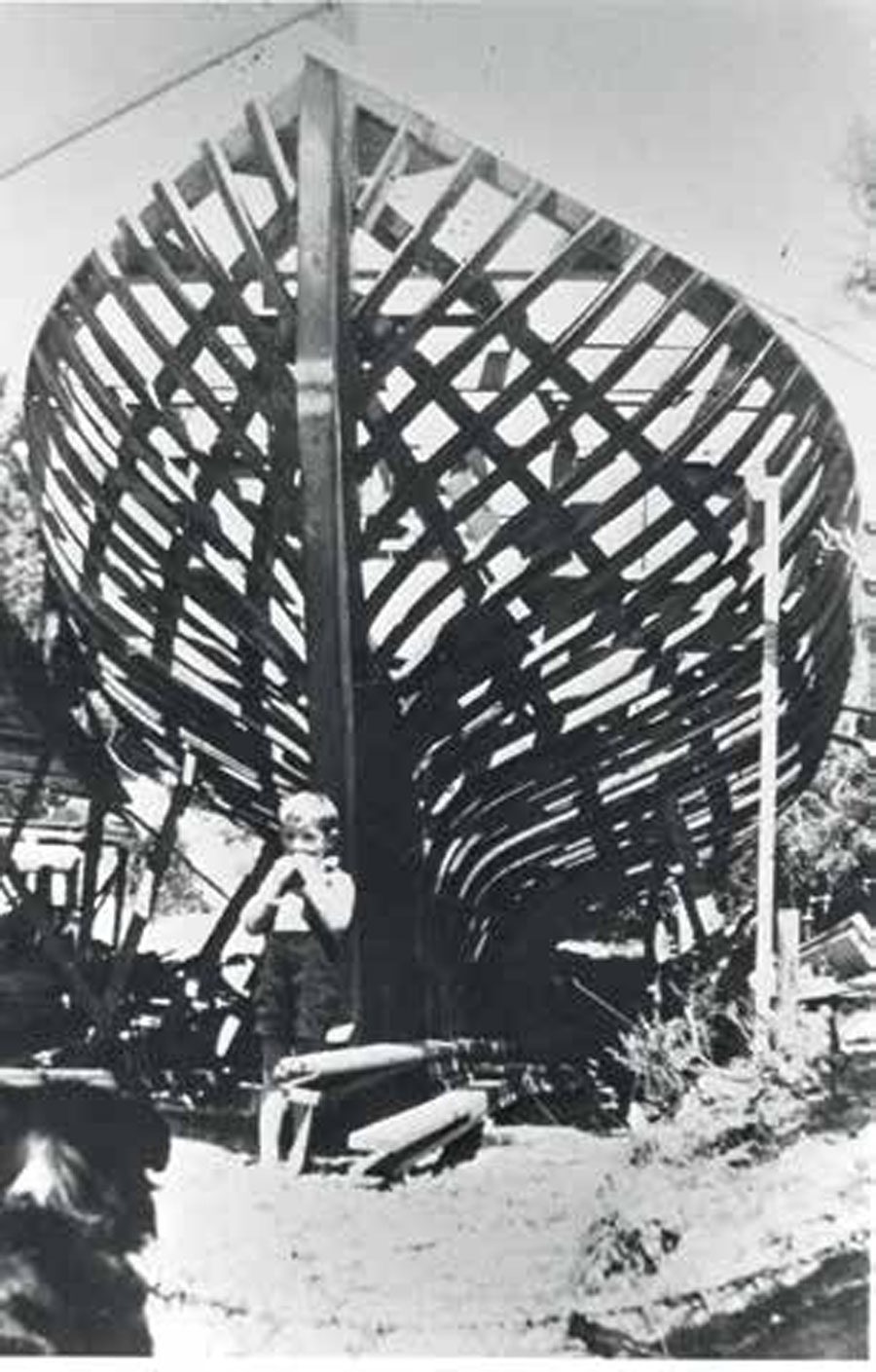
For the 1973 French nuclear tests, the New Zealand and Australian Governments sent navy ships to Mururoa. Vega this time crewed by McTaggart, Horne, Ingram and Mary Lornie, arrived there after the other protest vessels had left. With another bomb test imminent, French commandos stormed Vega (in international waters again) and assaulted the male crew members so badly that McTaggart was flown to hospital in Tahiti. The French shipped Vega back to Canada.
McTaggart’s legal fight with the French Government was funded by the sale of Vega. Again, she was neglected by her new owner. Meanwhile a recovered McTaggart became the chair of Greenpeace. He expanded the organisation, and they bought back the Vega. In 1981, they were back at Mururoa, this time protesting about the nuclear tests being conducted underground. Vega returned to Tahiti. She was back at Mururoa the next year, but within a week the French arrested the crew and seized the yacht, holding onto it for a year, before shipping it to Auckland.
In Auckland, Vega, now skippered by Chris Robinson, was in a flotilla that forced the nuclear-powered submarine USS Phoenix to come to a stop while entering Auckland Harbour. Then she spent a year in Australia involved in Greenpeace actions. This was when one of the current owners, Daniel Mares, joined the crew.
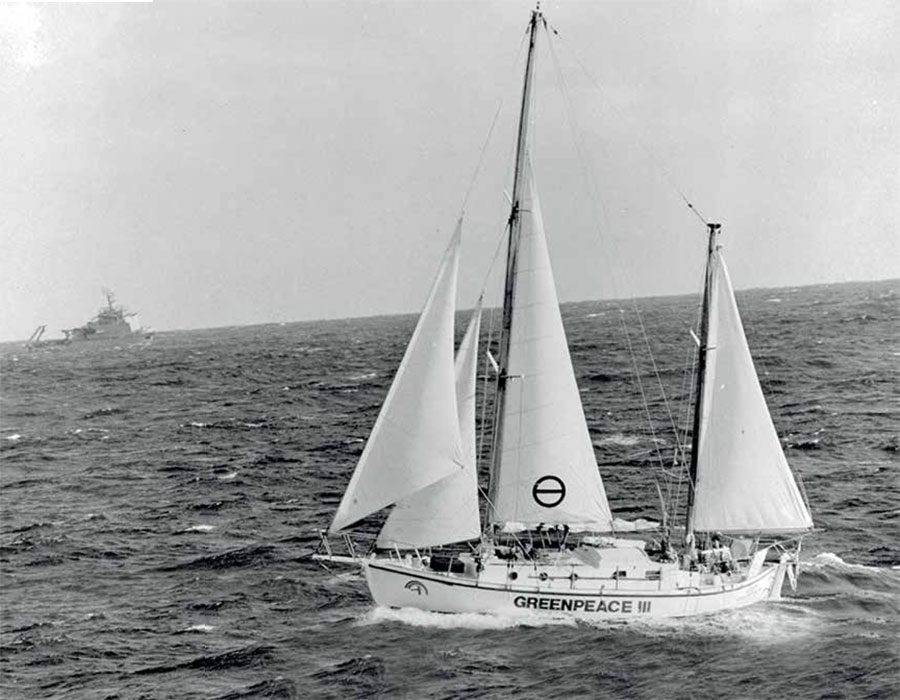
Back in Auckland in 1985, Vega was readying to join a Greenpeace flotilla for more protest at Mururoa. On 10 July, the Greenpeace flagship Rainbow Warrior was bombed and sunk in Auckland Harbour by French secret agents. Fernando Pereira, a Greenpeace photographer, was killed. Vega had been moored right next to Rainbow Warrior until an hour before.
Weeks later, Vega joined four other boats on a voyage to Mururoa. The protests went as before: hove-to just outside the territorial limits, Vega was boarded and seized; and later released to sail back to New Zealand.
Vega then spent years campaigning throughout the Pacific, visiting Rarotonga, Vanuatu and Papua New Guinea. In Australia in 1986, while campaigning on nuclear issues and protesting the arrival there of the USS Ramsey, Vega was rammed and seized by Queensland authorities.
In New Zealand again, she witnessed the final sinking of the Rainbow Warrior, to form a dive wreck/reef at Matauri Bay. Then there was two years of campaigning on the western seaboard of the USA, from Alaska to San Diego. Mares then took Vega to Japan, and on to Russia, but was not allowed to enter the port of Vladivostok.
In 1990, she sailed back to Japan, on to Guam, and did cyclone relief work in the Solomon Islands. She was re-fitted in New Zealand, and in 1992, sailed to the Mediterranean via South Africa, spending a few years involved with Greenpeace over fishing campaigns in France, Italy, Greece and the Balearic Islands.
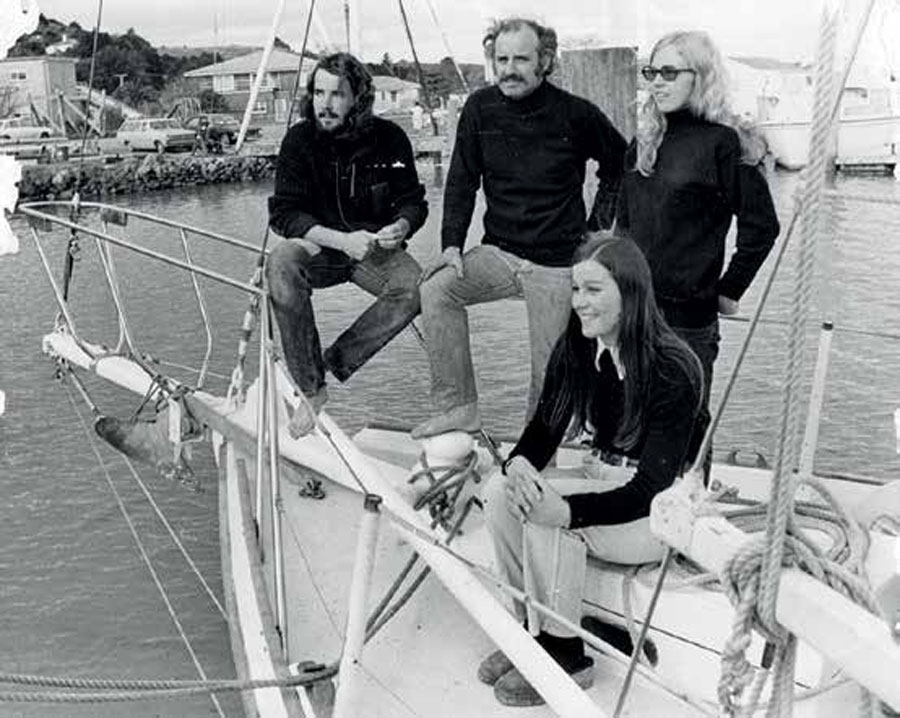
Then back to Mururoa in 1995 for another protest, the most effective to date, with 32 yachts participating in the flotilla, and also the new Greenpeace flagship, Rainbow Warrior II. Sticking to the script, the French Navy again captured Vega, and detained her at Hao Atoll. They deliberately neglected the boats – some say it was actual sabotage – then ordered the owners to collect them, giving them only 24 hours to make good the damage to sail 500nm back to Tahiti.
After another overhaul in New Zealand, Vega was gifted by Greenpeace back to McTaggart (now living in Paciano, Italy). Robinson sailed her to the Med again, doing some campaigning in the Caribbean en-route. McTaggart died in a car accident in 2001, and in his will, Vega went to Robinson, who already owned a steel replica named Fand. Vega continued campaigning from her new home base of Port Albert in the Bass Strait.
When Robinson died of cancer in 2008, a band of long-time Greenpeace supporters – Daniel Mares, Duncan Currie, Henk Haazen, Steve Sawyer and Rob Willighagen – formed a trust and bought the venerable yacht. Current owners also include Adam Currie and Mary Gallagher, and Greenpeace still contributes to her upkeep.
The New Zealand National Maritime Museum Hui te Ananui a Tangaroa in Auckland recognises the historical significance of this extra-ordinary, hard-working boat, and has her moored there at a generous discount.
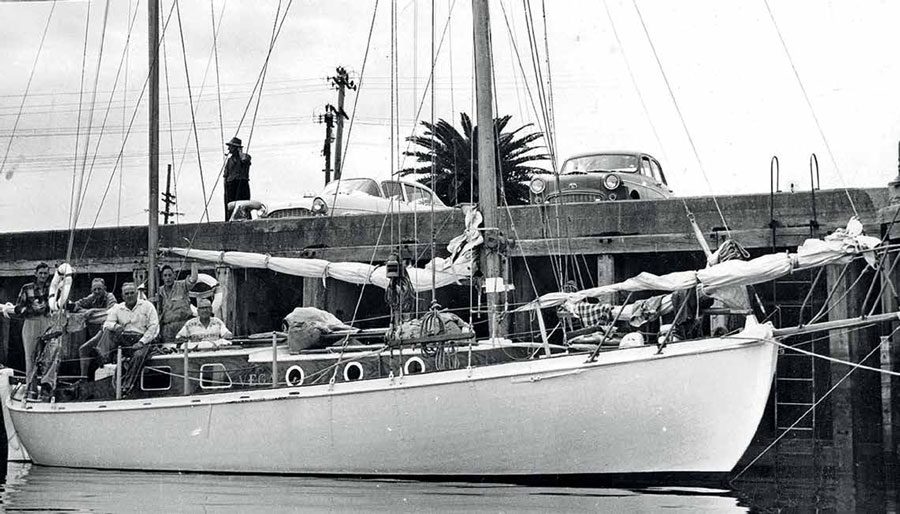
Vega is still a presence when it comes to making a statement. Just last year, we joined a Mauri o te Moana (Life Force of the Ocean) awareness flotilla that sailed through the America’s Cup spectator fleet. In deference to her heritage, Vega led the way.
John MacFarlane wrote recently about Vega in Boating NZ magazine: “Vega remains as sound as a bell today, a huge tribute to Alan Orams’ work 70 years ago…
“Her steadiness and comfort underway was magical, and the sense of history palpable. She held course easily and without fuss, and tacking was stately. There was a real sense this was a boat that would look after her crew regardless of any weather or sea conditions.
“Vega – a true ocean wanderer with a big heart.” BNZ




